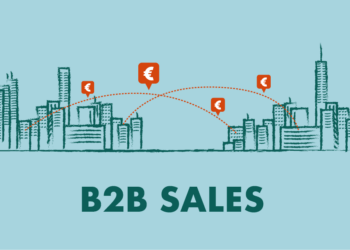The meteoric rise of the gig economy has fundamentally reshaped the professional landscape, heralding an era of unprecedented flexibility, autonomy, and entrepreneurial spirit. For the modern freelance professional, success is not merely a product of talent and hard work; it is intrinsically linked to the strategic deployment of a sophisticated arsenal of digital tools. These platforms and applications are the invisible threads weaving together the fabric of a thriving independent career, empowering gig workers to streamline workflows, manage finances with precision, communicate seamlessly with clients, and continuously elevate their skill sets. This comprehensive guide will navigate the essential digital toolkit for today’s gig worker, offering an in-depth exploration of the platforms that are not just helpful, but have become indispensable for navigating the dynamic and competitive world of freelance work.
A. Project Management and Productivity Powerhouses
For freelancers, time is a precious and finite resource. Every moment spent on administrative overhead is a moment not spent on billable work. This is where project management and productivity tools become invaluable allies, transforming chaotic to-do lists into structured, actionable plans. These platforms provide a centralized hub for organizing tasks, tracking progress, and collaborating with clients, ensuring that deadlines are met and projects are delivered with professional polish.
Trello, with its intuitive Kanban-style interface, allows for the effortless visualization of workflows. Projects are broken down into boards, lists, and cards, providing a clear and immediate overview of what’s in progress, what’s pending, and what has been completed. This visual approach is particularly beneficial for creative freelancers who thrive on seeing the bigger picture. Imagine a graphic designer managing multiple client projects; each client has a dedicated board, and each design phase, from initial concept to final delivery, is a list. As the project progresses, the corresponding card moves along the workflow, providing a real-time status update for both the freelancer and the client.
For those who require a more robust and feature-rich solution, Asana offers a powerful suite of tools for managing complex projects. Its ability to create detailed task lists, set dependencies, and establish timelines makes it an ideal choice for freelancers juggling intricate projects with multiple stakeholders. A freelance writer, for example, can use Asana to outline an entire content marketing campaign, with specific tasks for research, writing, editing, and client approval, each with its own deadline and assigned to the relevant party. The platform’s reporting features also provide valuable insights into productivity and project velocity.
Notion has emerged as a versatile “all-in-one” workspace, combining the functionalities of a project manager, a note-taking app, and a personal wiki. Its highly customizable nature allows freelancers to create bespoke systems for managing everything from client relationships and project timelines to personal goals and financial records. A freelance consultant could build a comprehensive client portal in Notion, housing project briefs, meeting notes, deliverables, and invoices in a single, easily accessible location. This level of organization not only enhances personal productivity but also projects an image of consummate professionalism to clients.
B. Financial Management and Invoicing Instruments
The financial health of a freelance business hinges on meticulous record-keeping and a streamlined invoicing process. The days of manually creating invoices and chasing payments are long gone, replaced by a new generation of digital tools that automate these critical tasks, ensuring that gig workers are compensated promptly and accurately for their hard work.
FreshBooks stands out as a user-friendly accounting and invoicing solution designed specifically for small businesses and freelancers. It simplifies the process of creating professional-looking invoices, tracking expenses, and managing time. With just a few clicks, freelancers can generate and send invoices, set up recurring billing for ongoing projects, and accept online payments. The platform’s expense tracking capabilities are equally impressive, allowing users to connect their bank accounts and automatically categorize business expenses, making tax time significantly less daunting.
For those seeking a free yet powerful alternative, Wave offers a compelling suite of accounting, invoicing, and receipt-scanning tools at no cost. This makes it an attractive option for freelancers who are just starting out and need to keep their overheads low. Wave provides unlimited invoicing, expense tracking, and financial reporting, empowering gig workers to maintain a clear and accurate picture of their financial standing without a monthly subscription fee.
When it comes to receiving payments from a global clientele, PayPal remains a ubiquitous and trusted platform. Its widespread adoption and ease of use make it a convenient option for freelancers working with clients from different countries. While its transaction fees can be a consideration, the security and familiarity it offers often outweigh this drawback. For freelancers who require more sophisticated international payment solutions, Payoneer provides a robust platform for receiving payments in multiple currencies, with competitive exchange rates and the ability to withdraw funds to a local bank account.
C. Communication and Collaboration Catalysts
Clear and consistent communication is the cornerstone of any successful client relationship. In the remote-first world of the gig economy, digital communication tools are the virtual offices and meeting rooms where collaboration happens, ideas are exchanged, and projects are brought to life.
Slack has become the de facto communication hub for countless businesses and freelance teams. Its channel-based messaging system allows for organized conversations around specific projects or topics, keeping communication context-specific and easily searchable. For a freelance web developer collaborating with a team of designers and content creators, Slack provides a centralized space for real-time updates, file sharing, and quick feedback, eliminating the need for lengthy email chains.
For face-to-face interactions, Zoom and Google Meet have become indispensable tools for video conferencing. Whether it’s a client kickoff meeting, a project progress review, or a virtual brainstorming session, these platforms provide reliable and high-quality video communication. The ability to share screens is particularly useful for freelancers who need to present their work, conduct tutorials, or troubleshoot technical issues with clients in real-time.
D. Skill Enhancement and Lifelong Learning Platforms

In the fast-paced and ever-evolving landscape of the gig economy, continuous learning is not just an advantage; it’s a necessity. The ability to acquire new skills and stay abreast of industry trends is what separates the thriving freelancer from the one who gets left behind. Fortunately, a wealth of online learning platforms offer accessible and affordable opportunities for professional development.
Udemy boasts an extensive library of courses on virtually any topic imaginable, from programming and data science to marketing and creative writing. Its on-demand, self-paced format makes it easy for busy freelancers to fit learning into their schedules. A freelance social media manager, for instance, could take a course on the latest digital marketing trends to expand their service offerings and provide more value to their clients.
Coursera partners with top universities and companies to offer more structured learning experiences, including specializations and professional certificates. For freelancers looking to deepen their expertise in a particular field, Coursera provides a pathway to gaining credible qualifications that can enhance their professional standing and command higher rates.
For those in creative fields, Skillshare offers a project-based approach to learning, with a vast array of classes on topics such as graphic design, photography, and illustration. The emphasis on hands-on projects allows freelancers to build their portfolios while acquiring new skills, a dual benefit that is particularly valuable in the competitive creative market.
LinkedIn Learning is another excellent resource, offering a wide range of video courses taught by industry experts. A key advantage of this platform is its integration with the user’s LinkedIn profile, allowing freelancers to showcase their completed courses and certifications to potential clients and collaborators.
E. Job Acquisition and Professional Networking Hubs

Finding a steady stream of high-quality clients is the lifeblood of any freelance career. The digital age has revolutionized the way freelancers connect with opportunities, with a plethora of online platforms dedicated to bridging the gap between independent talent and the businesses that need their skills.
Upwork and Fiverr are two of the largest and most well-known freelance marketplaces. Upwork allows freelancers to bid on projects posted by clients, while Fiverr operates on a “gig”-based model, where freelancers offer specific services at set prices. Both platforms provide a valuable entry point for new freelancers looking to build their portfolios and gain experience. However, the sheer volume of competition can make it challenging to stand out.
For those with specialized skills and a proven track record, Toptal offers a more exclusive platform that connects clients with the top 3% of freelance talent. The rigorous screening process ensures that only highly qualified professionals are admitted, which in turn commands higher rates and more prestigious projects.
Beyond these dedicated freelance marketplaces, LinkedIn has become an indispensable tool for professional networking and lead generation. By optimizing their profiles, sharing valuable content, and actively engaging with their network, freelancers can position themselves as thought leaders in their field and attract inbound inquiries from potential clients. Joining industry-specific groups and participating in relevant discussions can also be an effective way to expand one’s professional circle and uncover new opportunities.
The gig economy is a testament to the transformative power of technology. The digital tools at a freelancer’s disposal are more than just conveniences; they are the very scaffolding upon which successful and sustainable independent careers are built. By strategically leveraging the right combination of project management, financial, communication, learning, and networking platforms, gig workers can not only survive but thrive in this exciting and ever-evolving professional frontier.












